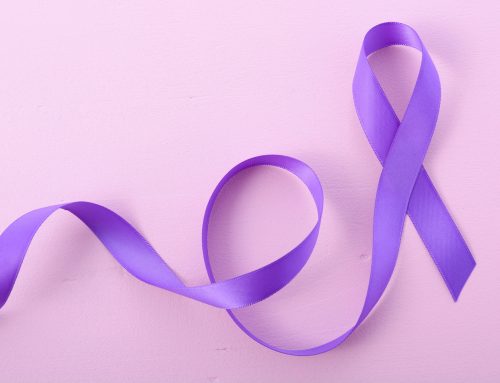In the U.S. there are 24 million people suffering from eating disorders, and 70 million worldwide. Female, male, teen, adult, thin, overweight—unhealthy relationships with food can and do affect every portion of the population.
The widespread distribution of eating disorders (EDs) is not so surprising when we consider that they are a classification of mental illness, and share many diagnostic markers in common with depression, anxiety disorders, and obsessive compulsive disorder. In fact, according to the National Association of Anorexia Nervosa and Disorders, a full 50% of those diagnosed with EDs also qualify for a diagnosis of depression.
Like with depression, there is evidence of a biological connection between a family history of eating disorders and likelihood of developing the illness. Additionally, just as depression can result from a chemical imbalance in the brain, so too is it thought that an imbalance of serotonin can contribute to development of an ED. Other causal factors can be unsteady psychological/emotional well-being and unhealthy social influences, such as distortive media representations of the human body, bullying, and peer pressure.
There are three primary eating disorders: anorexia nervosa, bulimia nervosa, and binge-eating disorder. However, it is possible for someone with an ED to share symptoms across syndromes, such as a person with anorexia nervosa who occasionally binges and purges.
The importance of Eating Disorder Awareness is not to diagnose someone with a particular disorder, but to be conscious of danger signs in yourself and loved ones. People suffering from an ED sometimes think that their behavior is normal, necessary, or “not that bad” but despite these assurances, any worry you have that someone might be displaying signs of an ED should be shared and investigated. Untreated eating disorders can lead not only to lifelong health defects, but also death.
1. Anorexia Nervosa
Anorexia nervosa (AN) has the highest mortality rate of any mental illness. And it is the third most chronic illness among adolescents. It is characterized by prolonged and compulsive fasting, sometimes paired with other dangerous behaviors like over-exercising and drug abuse.
Anorexia often stems from distorted self-perception. Sufferers of AN often view themselves as grossly overweight even when they are underweight. They compulsively control their food intake, and often exercise excessively and abuse over-the-counter pharmaceuticals like caffeine pills and diuretics.
There are many symptoms of AN but some of the most noticeable are: low body weight, refusal or avoidance of food, negative self-image, lethargy, lack of menstruation in women, irritability, and constantly feeling cold.
It is important to remember that a person with anorexia is not dieting or trying to get fit, they are starving themselves. Due to the compulsive nature of the disease, they may try to hide their behaviors, out of shame or out of helplessness. They cannot simply choose to stop; someone who suffers from AN needs nutritional, psychological, and emotional support in order to begin controlling their compulsions.
The stakes in seeking such help are high, because the long-term health ramifications of living with anorexia are infertility, weak heart function, brain damage, and death.
2. Bulimia Nervosa
Unlike those afflicted with AN, bulimia nervosa sufferers are often not underweight, generally ranging from normal to overweight. Bulimia is characterized by the same body dissatisfaction as that of anorexia sufferers; bulimic patients do not like the way they look and often feel self-disgust after eating.
Bulimia is generally characterized by bingeing and purging. A bulimia nervosa (BN) patient will gorge on food and then vomit in order to try and rid themselves of the calories. Like AN patients, they are likely to abuse laxatives, and are even more likely to conceal their disorder, out of a sense of shame or disgust. These purges can happen many times a week, or in extreme cases, many times a day.
Some BN patients also engage in excessive exercise, but because they are often not noticeably underweight, and almost always conceal their binges from friends and family, BN can be difficult to notice in a loved one.
However, there are some signs that a person is engaging in bulimic behavior: chronic sore throat, puffiness in the cheeks and face, tooth decay, and kidney, intestinal and/or acid reflux disorders can occur.
3. Binge-Eating Disorder
While all eating disorders can occur in both men and women, binge-eating disorder is noteworthy because it is distributed almost equally between the sexes. The disorder has only recently been recognized as a psychiatric illness and the parameters for diagnosis are still being established. Generally the symptoms of binge-eating disorder are consistent with those of a BN patient, but without the purging element—they eat huge amounts of food in a sitting and feel totally out of control.
Like with AN and BN, the disorder is accompanied by a feeling of shame and lack of self-worth. Symptoms of the disease include weight gain (which can manifest in morbid obesity), rapid consumption of large amounts of food, overeating when not physically hungry or to a point of uncomfortable fullness, low self-esteem, depression, and anxiety.
If unchecked, binge-eating disorder can result in obesity, high blood pressure, diabetes, breathing difficulties, immobility, and heart disease.
Treatment
The first step in treating an ED is disrupting the unhealthy pattern. For anorexia nervosa, this means returning the patient to a healthy weight and ensuring they meet their nutritional needs. For bulimia nervosa, it is to stop the binge-purge cycle, and for binge-eating disorder you must stymie the binges.
These measures alone are not enough to cure the disorders. There is no cure for an ED, only recovery and balance, and these start with seeking treatment.
Treatment varies by the disorder but they share some common elements: psychotherapy, nutrition education, medication, and hospitalization.
Psychotherapy helps patients to identify the habits and emotions that trigger their compulsions, and to deal with these danger signs in a more constructive way. Therapy can also consist of group or family sessions, and often comes with a nutritional and pharmaceutical support component. In extreme cases, a doctor may order a patient to be hospitalized if their vitals are too low, or they are demonstrating dangerous tendencies such as self-harm.
Support
Eating disorders are a highly damaging, highly dangerous medical health issue that affect huge portions of the world population. Treatment can be slow and frustrating, and as such the most important component to recovery from an ED is emotional support from friends, family and the patients themselves.
As important as those support structures are, the best support often comes from people who have experienced your same difficulties. To this end, forums like this one at the National Association of Anorexia Nervosa and Associated Disorders can be invaluable.
Like many mental illnesses, eating disorders can trick you into thinking they’re normal the longer you live with them. But no one should have to live with feeling out of control of themselves, ashamed, or such a need for control that they starve themselves. No one should have to, and no one deserves to.
So if you know someone in need of help, or are yourself in danger from an ED, remember that these difficulties and compulsions are not the fault of the patient; they are a disease. And they can be overcome.
—
Like what you see? Sign up to join Human Health Project, a community-based, not-for-profit website focused on using peer to peer health support for a healthier you.
—





Leave A Comment
You must be logged in to post a comment.